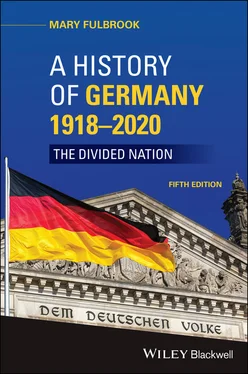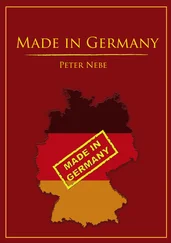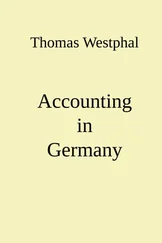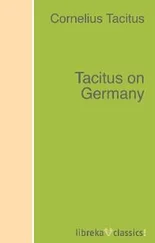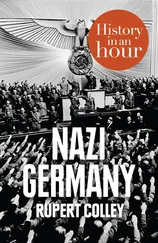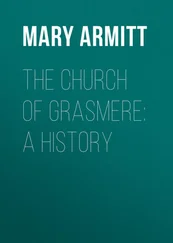1 ...6 7 8 10 11 12 ...31
Germany in the Early Twentieth Century
What was Germany like in the decades prior to 1918? A ‘small’ Germany, excluding Austria, had been unified only as a result of Prussian chancellor Otto van Bismarck’s policies of ‘blood and iron’ in 1871. Although processes of industrialization had started earlier in the nineteenth century, the pace of change was dramatically quickened by unification. In the period from 1871 to the outbreak of war in 1914, Germany’s output of manufactured goods quintupled, while her population grew from 41 million to 67.7 million. Rapid changes in economy and society were associated with a host of strains in the autocratic political system that was Bismarck’s legacy for Imperial Germany.
Some areas were experiencing rapid modernization, with expansion in urban areas, such as the great metropolitan capital, Berlin, and in the heavy industry and coal-mining centre of the Ruhr. Workers migrating from the countryside to the towns were lucky if they were accommodated in the housing estates of paternalistic employers such as Siemens; many more found themselves living in cramped, dark tenement buildings with poor sanitation and limited backyards which were the only areas where their children could play. Meanwhile, the urban upper-middle classes led often rather stuffy lives in the somewhat pompous buildings that were characteristic of Imperial Germany. The ‘middle classes’ were a far from homogeneous entity. At the upper levels were the officials, professionals and state servants (the Beamten , in Germany a wider category than the British ‘civil servant’). Then, at a more modest social level, there were the increasing numbers of white-collar employees ( Angestellten ) as well as the older groups of the self-employed, traders and shopkeepers, and small artisans. These latter groups were increasingly challenged by the rise of ‘modern’, large-scale mechanized industry, run by major entrepreneurs and by the growth of big department stores as outlets for mass-produced wares. Urban life was clearly changing and expanding at a quickening rate.
Peasants in far-flung rural areas, such as southern Bavaria, might still appear to be living as they had done for centuries, although the notion of a static, unchanging ‘traditional’ rural society is something of a myth. While the urban bourgeoisie might be enjoying the fruits of modern technology – such as electricity – these peasants would be living in the old, wooden farmhouses, with their religious wall-paintings and flower-bedecked balconies, where they still relied on candlelight, water from the well and very rudimentary sanitary facilities. Small peasant economies in the south and west had been interpenetrated by artisanal activities for centuries, and had also begun to cater to the newer pursuits of tourism. In the northeast and, particularly, eastern areas of Germany, rural life was characterized by a rather different social pattern: estates owned by the aristocratic landowning class, the Junkers, were worked by landless agricultural labourers (often Polish) and were increasingly under strain in the competitive atmosphere of a rapidly industrializing nation. While retaining a socially and politically dominant position, the militaristic landowning caste was suffering a period of economic difficulty, necessitating a series of compromises with, particularly, increasingly important industrial interests.
There were many regional variations: the German Empire had by no means homogenized the differences between its constituent states, and in many ways regional and other loyalties overrode any ‘national’ identification. There were traditional antagonisms between, for example, Bavaria and Prussia, based on centuries of political, cultural and social differences. The Reich was ethnically diverse, with minority populations including Danes and Poles. Citizenship in the Reich under the 1913 law, while emphasizing the principle of descent, was based on citizenship within one of its constituent states, not on principles of ethnicity as such. German Jews had become increasingly assimilated over the later decades of the nineteenth century, and actively participated in civic life, shaping and challenging aspects of society and culture. In the early twentieth century increasing numbers of so-called Ostjuden (Eastern Jews) arrived in Germany, seeking better economic and social conditions and escaping pogroms in Eastern Europe. Religious differences among Christians were also of crucial importance: post-Reformation Germany was divided between Catholicism and a variety of forms of Protestantism (both Lutheran and Reformed). While some states – notably Prussia – were of a mixed religious complexion, divisions between Catholic and Protestant communities in many areas were highly salient. These divisions went right through the community: it was quite possible to live one’s life entirely within the framework, for example, of the Catholic church and its political, economic and social institutions: the Catholic Centre party in politics, the Catholic trade unions at the workplace, the reading, cycling and singing clubs when at leisure. Similarly, Protestants and others had their own penumbra of institutions. Political persuasion might be as important as religious confession: the Social Democrats, for example, had a comparable range of organizations and leisure activities, encompassing many aspects of life and helping to define a particular social and cultural milieu. It is difficult to evaluate the implications of these sociocultural environments; some historians have seen them as giving members of those subordinate groups that the architect of Imperial Germany, Bismarck, dubbed ‘enemies of the Empire’ ( Reichsfeinde ) an accepted place in society, while others have seen more subversive aspects to their varied activities. Then, too, there were those members of society who constituted different ‘under-worlds’: those who fell through the cracks, or resisted all attempts at organization of whatever kind. 1
Politically, the old Prussian aristocracy retained preeminence nationally, through its domination of the largest constituent state of the federal empire – Prussia. The inegalitarian three-class voting system obtaining in Prussia entailed the division of the population of each electoral district into three classes according to the payment of wealth taxes. The minority that were the richest were entitled to one-third of the votes; the moderately wealthy the next one-third; and the large majority that fell into the poorest category were also allotted only one-third of the votes. The double effect of this system not only greatly disadvantaged the propertyless masses but also promoted the political position of the landowning Junker class (who were relatively the wealthiest within the sparsely populated rural constituencies) compared with the very much wealthier urban bourgeoisie. Dominating Prussian politics, the Junkers were then able to play a major role in the Prussian-dominated Reich. It was a role they were to exercise in the context of the autocratic political structure of the German Empire: real power lay not so much with the Parliament or Reichstag as with the emperor, his close circle of advisers, his chancellor, and leaders of the army and the civil service. Influence was exerted on these groups and individuals by the increasingly important pressure groups – many stridently nationalist – that circumvented parliamentary politics in pursuit of their aims. As the German sociologist Max Weber put it, no person with any aspirations to real power would seriously consider becoming a member of Parliament in imperial Germany.
Yet at the same time Junker domination was not unchallenged. For one thing, with Germany’s extraordinarily rapid industrialization, the propertied bourgeoisie ( Besitzbürgertum ) was becoming increasingly important, and compromises had repeatedly to be hammered out between policies reflecting bourgeois economic interests and the often conflicting interests of the landowning classes. At the same time, the working classes were emerging on to the political scene, particularly through the ever-growing Social Democratic Party (SPD). This latter, while professing a certain revolutionary rhetoric deriving from its Marxist heritage, was in practice rather moderate, with a marked focus on parliamentary representation and activity (partly as an ironic result of Bismarck’s antisocialist laws that effectively restricted Social Democratic activity to this sphere). Nevertheless, the growth of an explicitly radical party representing the expanding working classes struck fear in the hearts of the elites, who – on some accounts – resolved certain differences among themselves in order to present a more united front against a perceived threat from below. Whatever the wider merits of this interpretation, certainly one manifestation was the fostering of German nationalism, in the hope that loyalty to the German ‘fatherland’ would transcend bitter divisions between the classes. Fear of potential civil war at home contributed to willingness to engage in war abroad.
Читать дальше
